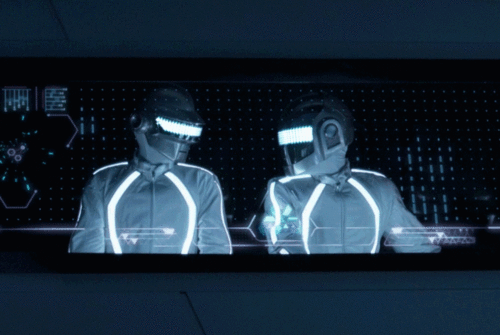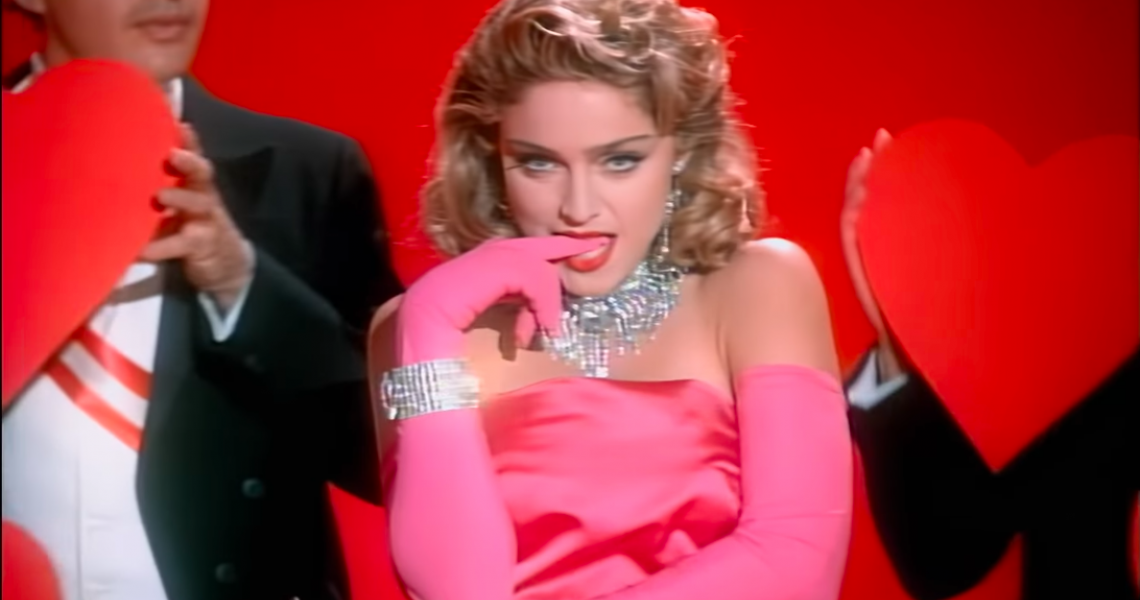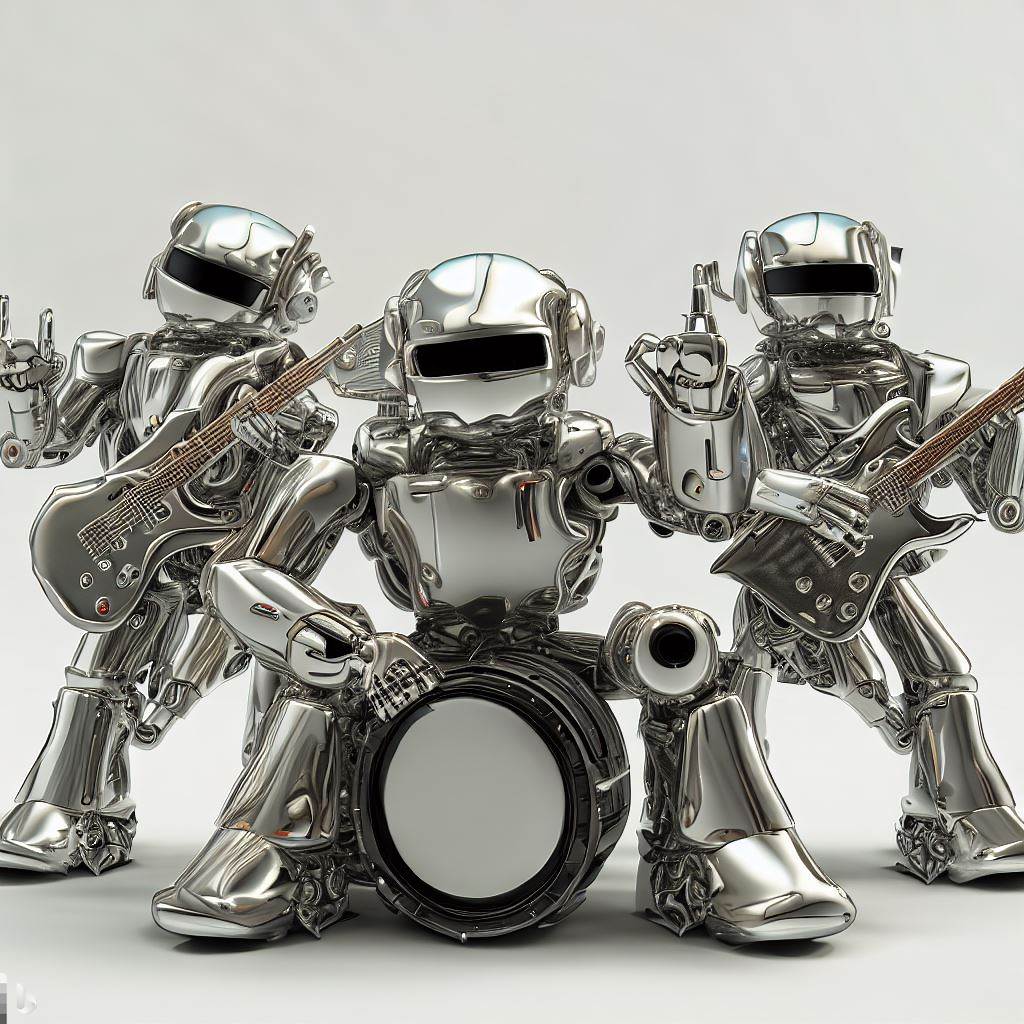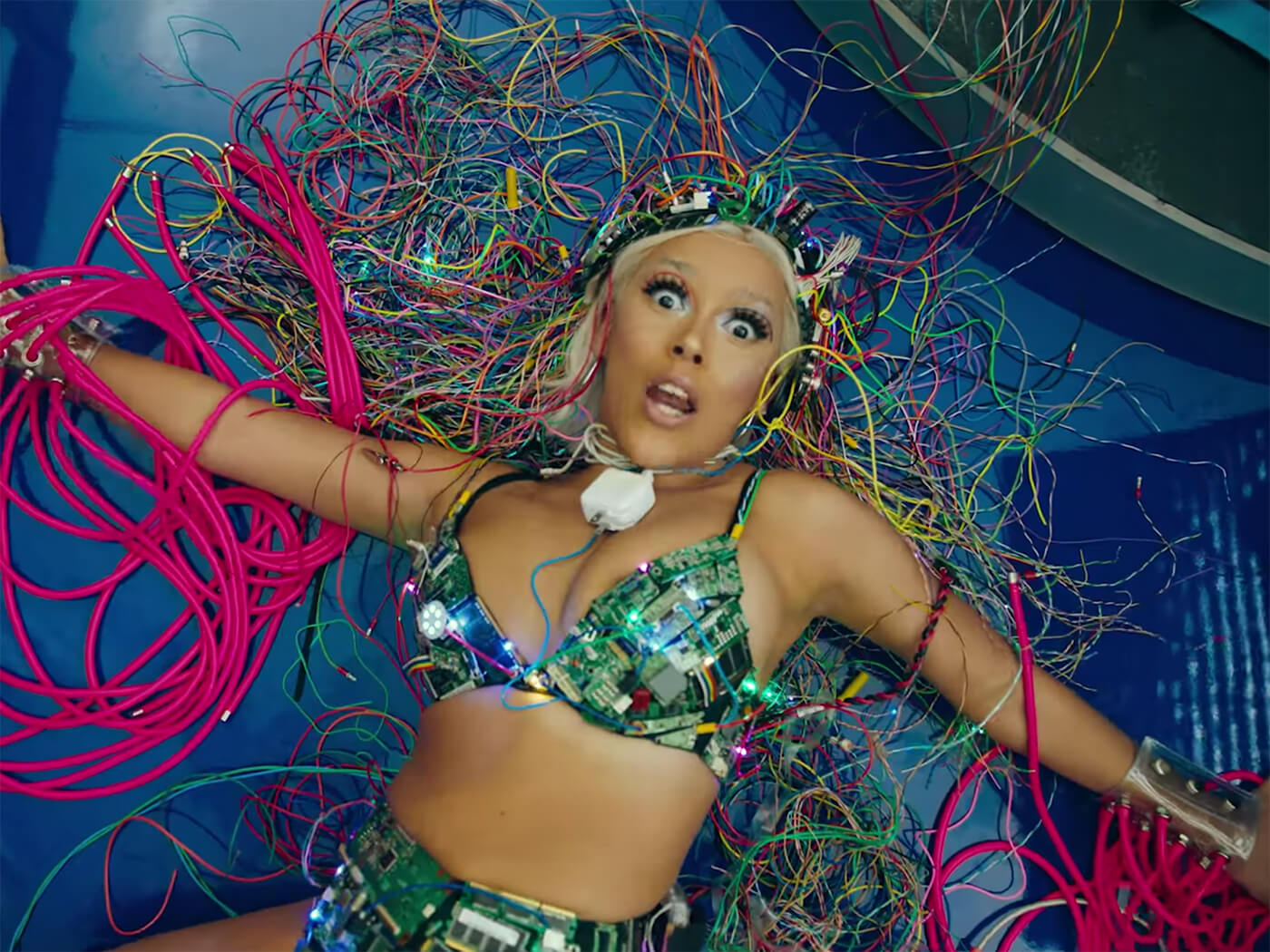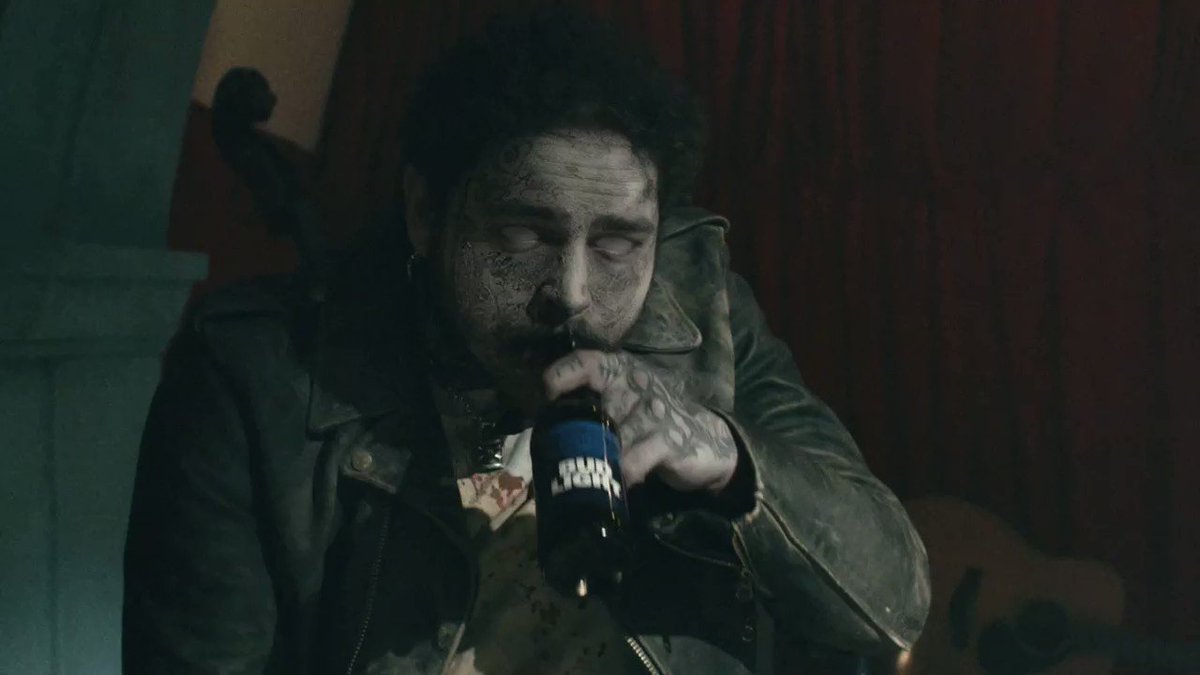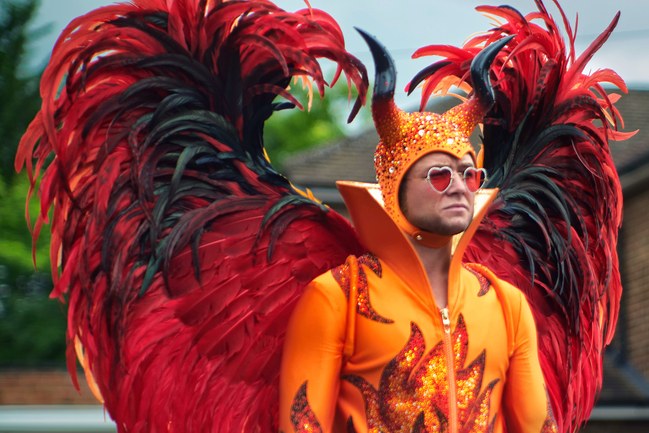–
Have you ever wondered?
Theorising
What will music genres be like in 100 years? Which ones will be more abundant? What will they be called? Which current genres will be mixed or revived? This blog is a time capsule in which we will put all the logical expectations about the future of urban music, and we will do it based on the history of urban music and the evolution and different mixes of the genres that have predominated in each phase.

Let’s start with what we all know: something that has been said a lot lately about the future of humanity is that the machine will overcome the imperfection of the human factor, and beyond the technical aspects, the idea that robots will eclipse us in a task as creative and personal as music is often repeated.
In fact, machines with algorithms that compose on their own, such as Shimon, a robot that composes by itself, and also improvises live music, have been appearing for years:
I’ll tell you what is really going to happen, and no, the machine is not going to replace the human, and certainly not in a job in which the human being himself demands more humanity than in any other. That will only happen when transhumanism gets out of hand and we ourselves become robots, but in that scenario it is possible that music will disappear altogether.
What will really happen is that the machine will greatly facilitate the work of creating and composing music by means of different artificial intelligence models, highly advanced algorithms of automation in software and hardware, etc. What is certain is that electronic music will definitely establish itself while acoustic music (acoustic groups, symphonic orchestras, etc.) will lose steam.
Acoustic music won’t disappear either, don’t panic: what is likely to happen is that the presence of synthesizers and electronic pianos will become more and more vital. There will be no bands with just guitars, drums and bass like ACDC, unless they are tributes to old music.
Well, I’ll stop rambling and comment on the possible genres of the future:
1. EXOTISM
World music 2.0.
Could you create a mix of dancehall and flamenco? If they can be made to fit together it could very well happen; let’s bear in mind that nowadays there are similar mixes – certainly not as daring as this one – but equally fresh, like bossa-dancehall in some zouk tracks. It’s just a matter of someone coming along and seeing the possibility; the taste for freshness at any price will lead to this kind of scenario.
Exotic genres “electronified”.
Yes, everything will pass through the hands of electronics. There will be “revivals” of genres that are slowly being lost (speaking in the future), as happened with electroswing and the forgotten jazz of the 20s, but they will go in a chain, especially with rural folk music. Over time it is possible that folk music will lose steam, and people will demand more and more electronic percussion.
In this scenario the ranchera would be electro-ranchera, the bolero electro-bolero, the ballad electro-ballad and so on. Otherwise it is possible that these genres will slowly die out as did many other traditionally transmitted oral music, basically because of the disinterest people will feel for rhythms without compression/excitement.
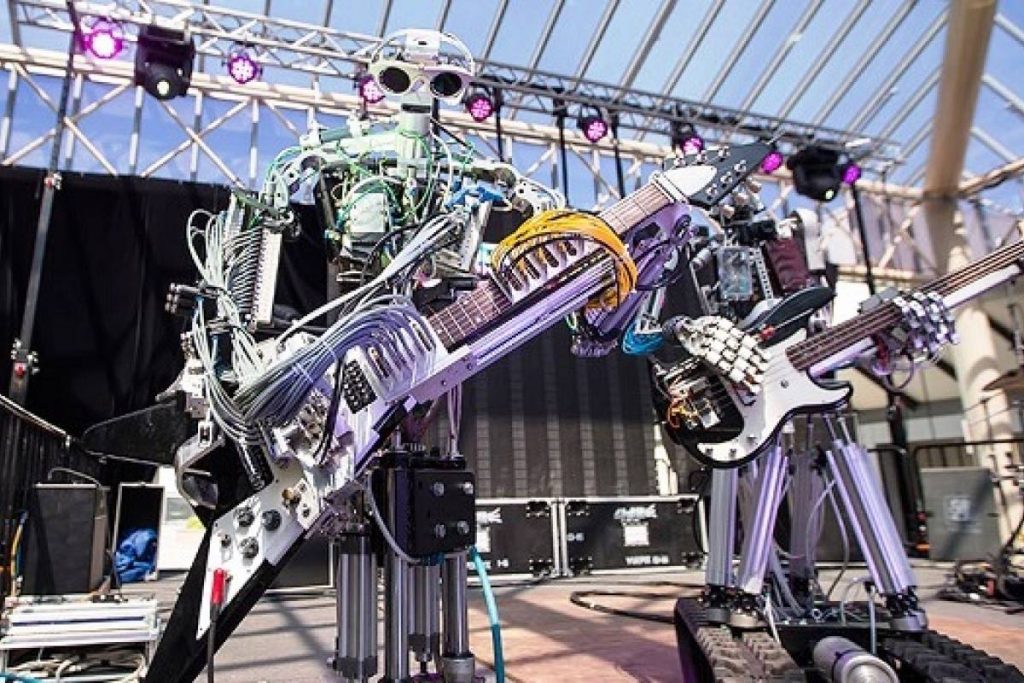
Celtic vibe
As I mentioned earlier, the need to find new models of art will make us turn to little-known rural folk music, from Celtic chants to the dance accompaniment music of Amazonian tribes. It is possible that through these influences we will create new music, “electronifying” exotic percussions. This music will become the norm, as dancehall and others do today, with various African-American elements in its rhythms, bass and chorus.
2. DISTORTION
Synth metal
We will also get to know synthetic heavy metal; it will have all-electronic percussion, bass and keyboards, and will only keep the electric guitar. Thus the whole mixing-mastering landscape will be affected and a middle ground will have to be found so that the distortion of guitars and keyboard sounds is well distributed and the bass of percussion and bass is also very present.
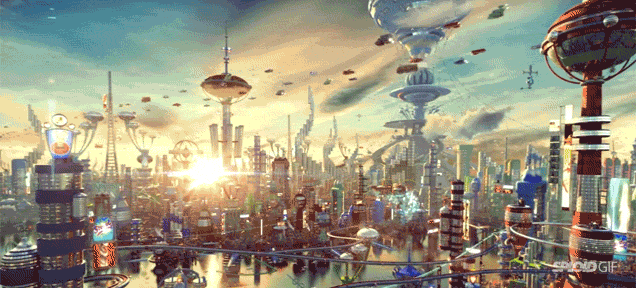
It is possible that from this sub-genre more sub-categories will sprout, such as synth black metal, synth death metal, synth melodic metal… the distortions will not only be analogue like in an amplifier, but surreal and digital like in today’s synthesizers. The most likely scenario is that keytars will make a comeback (today there are only a few keytar models on the mainstream market, but in 100 years there might be a lot of brands competing to create the most complete keytar).
G soul
Trap can be interpreted as a way of communicating aggressive messages based on its sound. In its time, grunge was also a way of conveying anger, pain or depression in life/love, especially in songs with a love or spiteful tone, very common in Western music of all times. Nowadays, to cover these expressive needs of love or sensuality, we have RnB; a modern, romantic, sensual genre with a deep touch.
For it is possible that in the future, with the constant persistence of youth in expressing anger – and related to urban tribes and the need for location and a sense of belonging – a genre will one day be created in which, as in its time with grunge (and today with grunge trap), romanticism or depression will be externalised through this screeching RnB.
And I’ll say more: clean-sounding electric guitar riffs have already made their way into the dancehall arena, but so will the distortion characteristic of metal one day. Stay with this prediction because one day it will come true; we’ll be dancing in the disco with heavy guitar distortion playing in the background.
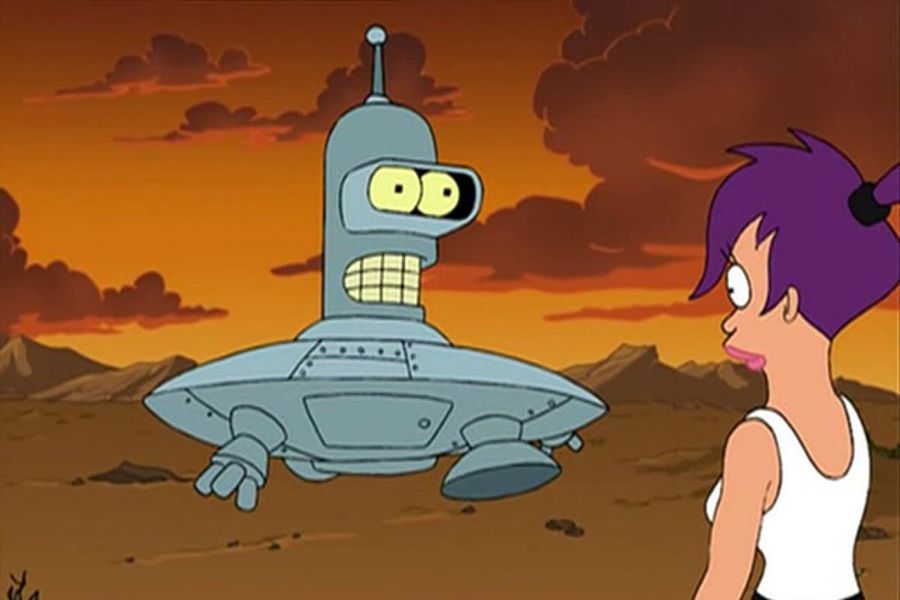
This would create a darker version of the genre, and more hardcore or more sexually explicit lyrics could be written, as well as a more excited sound, with toasty bass, a hi end screeching and lots of guitar and synthetic distortion throughout the frequency register..
And, with the human voice being the most infinite instrument, it would make the most sense to use high-pitched singing techniques to achieve soul vocals with a touch of “huskiness” (raspy vocals) to make them sound squeaky in a way that ties in with the overall aesthetic, like a jazz saxophone doing crazy bebop lines. This way we would get a rougher version of modern soul, which is somewhat needed, and would satisfy a perennial niche market.
Slow trap
It would be loud music with distorted trap-like bass, but even slower, and it would play extremely with bright sub-bass with very wide sound wave phases. So much bass pressure would produce a feeling of psychedelic ecstasy.
In order not to bore by excessive slowness (the rhythm would be around 75 bpms and downwards), it would need elements to attract the attention of the listener; possibly percussive effects in all parts of the frequency register, filtered to produce a pleasant ASMR-like sensation..
Today there is the so-called “sound drug”, which is basically music mixed with noise at different frequencies and playing with stereo, mono and panning. It produces a feeling of dizziness and ecstasy, and some people have become addicted to it..
The evolution of trap into a genre with more of a tendency to excel in sub-bass frequencies would be logical, and the more that producers would focus on these frequencies – developing new saturation and compression techniques – the more feasible a successful rhythmic slowdown would be in terms of marketing..
To understand why genres that accentuate the punch of the sub-bass are usually slower than 90 bpm see my blog reggaetoneros know more about Einstein than you; there is an interesting correspondence in that regard..
3. BACALAO
Neo club
There is a possibility of new reconquests of “lost” genres within club music. There could be a mix between the crazy polisaws and synths of the hooks of EDM mixed with the gunky groove of disco. It would be something like the vaporwave of the future, bringing together two nostalgias (that of the 80s and that of the 2000s, the hunger and the desire to eat).
Pagan house
There could also be some very strange rescues of two sister genres: techno and house. It is possible that at some point, with everything already invented, one might resort – for example – to reviving pagan medieval music, turning it into a sub-genre of techno such as acid or progressive..
In techno, pagan music would make sense as a sample to be used as an idea even repeated ad nauseam in each track, adding beats and barely cutting the chants. In the case of house it would give coherence to the strong sections in the form of chopped up vocal chops for the hooks.
It has happened before: in heavy metal there is the sub-genre “pagan”, which is not about creating literal folkloric quotations from the Middle Ages, but recreating and idealising them as Bartok would do in “contemporary classical” music according to his idea of “imaginary folklore”. It is not a question of inventing anything, but rather of blazing new creative trails..
4. CLASSICAL MUSIC
Electro-simphonic
It sounds like a joke, but beyond Wendy Carlos’ Switch on Bach and the music of Vangelis – highly experimental and very uncommercial works for the direction that urban music is taking today – there are not many recognised attempts to “electronify” classical music..
In this sense, if we could create something well thought out like Rosalía did with the mix of flamenco and mainstream genres, it could work; even the music of Vivaldi or Haendel sampled with a bass, hard percussion and passaggio filters on the violins could work. It’s not that far away…
Strings n bass
This genre would be a mixture of cinematic music with orchestral timbral effects and BSO-like dynamic surges mixed with powerful electronic percussion. It would be the -to a certain extent- logical evolution of the music of Anglo-Saxon pop artists like Sam Smith or Aloe Blacc; something acoustic, almost orchestral, deep and at the same time heavy, modern and fresh.
The vocals on these tracks are like those we find today; you might hear a Tyga or a Post Malone of the future with cinematic music in the background. These tracks would have many sections and a more fluctuating energy than what we perceive in today’s urban music tracks, and would carry with them a peculiar laboratory mash-up that would include orchestral sound with a surreal-electronic twist..
So much for my list of possible genres, sub-genres and mixtures. This is what awaits us in a few decades, and it is even possible that time will prove us right much sooner in some of the cases mentioned.
Anyway, I hope you enjoyed this blog and I’ll leave you some similar ones down here. Remember that you can buy a rap, trap, dembow, pop, r&b, dembow, reggaeton… instrumental!! A la carte.
